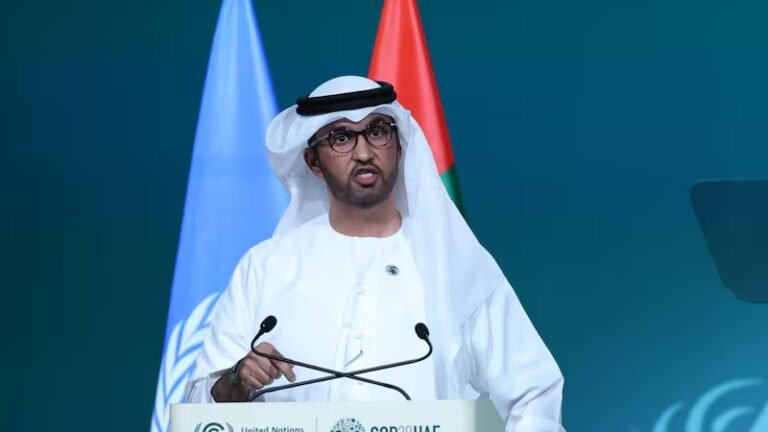When we convened COP28 in Dubai last year, the Global Stocktake—offering the world’s first progress check toward the Paris Agreement goals—painted a stark picture of unmet targets. To ensure the critical 1.5°C warming target remained viable, practical pathways were needed. In achieving what became known as the UAE Consensus, we forged a groundbreaking agreement among nations for a just, orderly, and equitable energy transition.
The UAE Consensus commits nations to triple renewable energy capacity, double energy efficiency, and halt deforestation by the decade’s end. This shift reframed climate action as a driver of socio-economic progress rather than a burden. Determination overcame doubt, and COP28 underscored finance as pivotal to climate progress, marking a significant milestone with the launch of the long-anticipated loss and damage fund.
COP28’s efforts mobilized a collective $85 billion in commitments, including $30 billion for Altérra, the world’s largest private climate investment fund, of which I am chairman. More than $700 million was pledged toward the loss and damage fund. However, available, accessible, and affordable finance is critical to making ambitious goals a reality. We, therefore, support COP29’s push in Azerbaijan for nations to deliver a New Collective Quantified Goal (NCQG) on climate finance—vital to advancing the UAE Consensus.
Inclusivity was central to COP28’s success. We engaged the private sector and energy industries, bridging ambitious global goals with practical, tangible solutions. Critics of the energy sector’s involvement overlook its pivotal role in progress, as demonstrated by the Oil & Gas Decarbonization Charter. This charter commits signatories to eliminating methane emissions by 2030 and achieving net-zero by or before 2050. Transforming energy systems is one of three defining global megatrends, alongside AI’s rise and emerging markets in the Global South.
Navigating these megatrends will require significant investments, yielding even greater returns in terms of sustainable growth and resilience. The International Energy Agency estimates that fulfilling the UAE Consensus goals of tripling renewables and doubling energy efficiency alone could achieve two-thirds of Paris-aligned targets.
Signs of progress are visible; a record 473 GW of renewables was added globally last year. Generative AI, meanwhile, is forecasted to bolster global GDP by at least $7 trillion over a decade while cutting emissions by 5-10% by 2030. Yet, AI’s growth also drives electricity demand from data centers, potentially doubling by 2030. Meeting this demand will require cost-effective and carbon-efficient integration of renewables, nuclear, and gas. Collaboration between technology, energy, and investment sectors is crucial, as is ensuring a low-carbon development pathway for emerging economies in the Global South. These regions, representing 120 countries, currently attract just 15% of global renewables investment.
Addressing these challenges necessitates heightened governmental ambitions, reinforced renewable energy targets, and private-sector investment incentives. As I transition the COP presidency to H.E. Mukhtar Babayev in Azerbaijan, I am confident that detailed blueprints can yield transformational breakthroughs.


